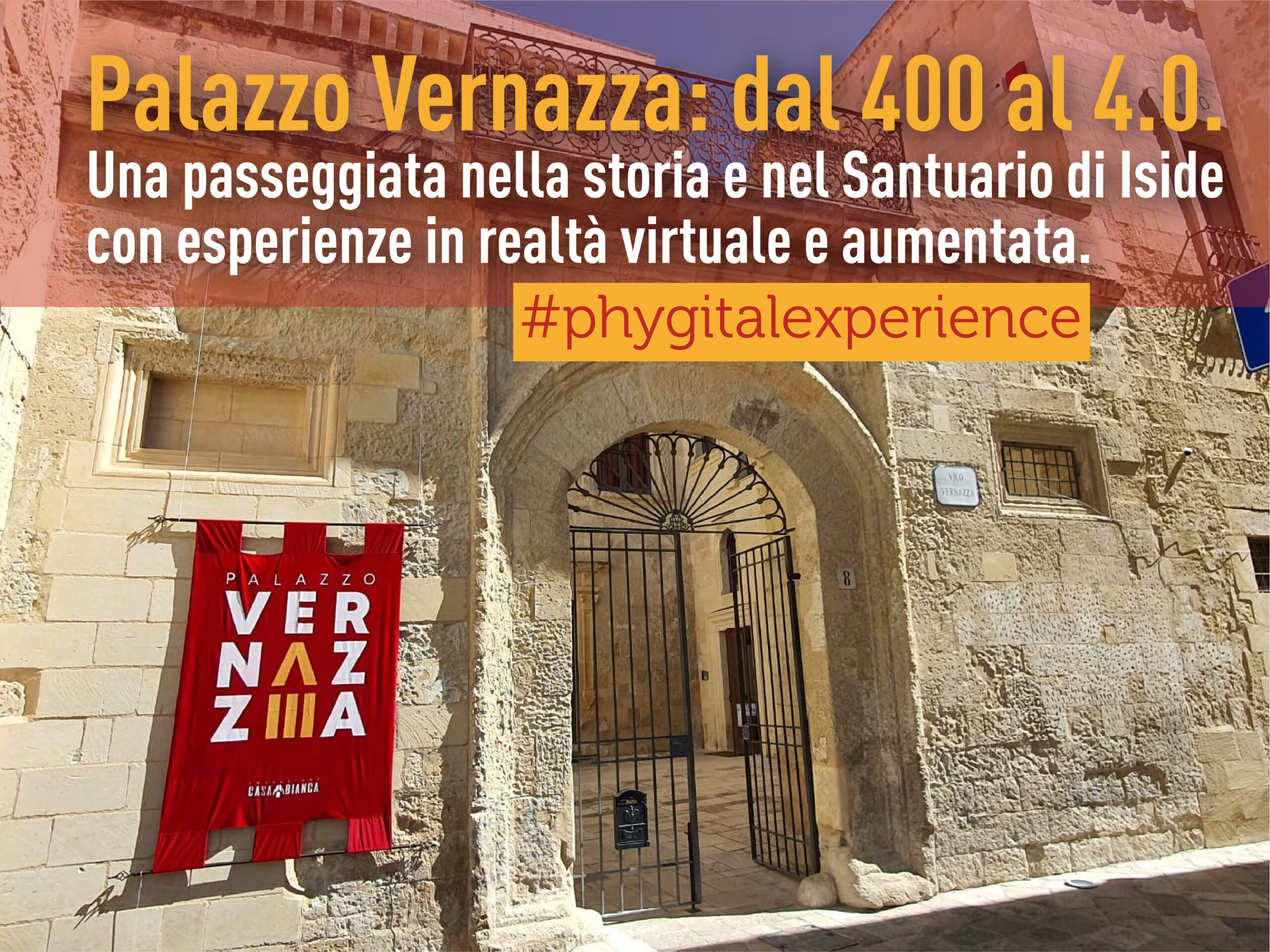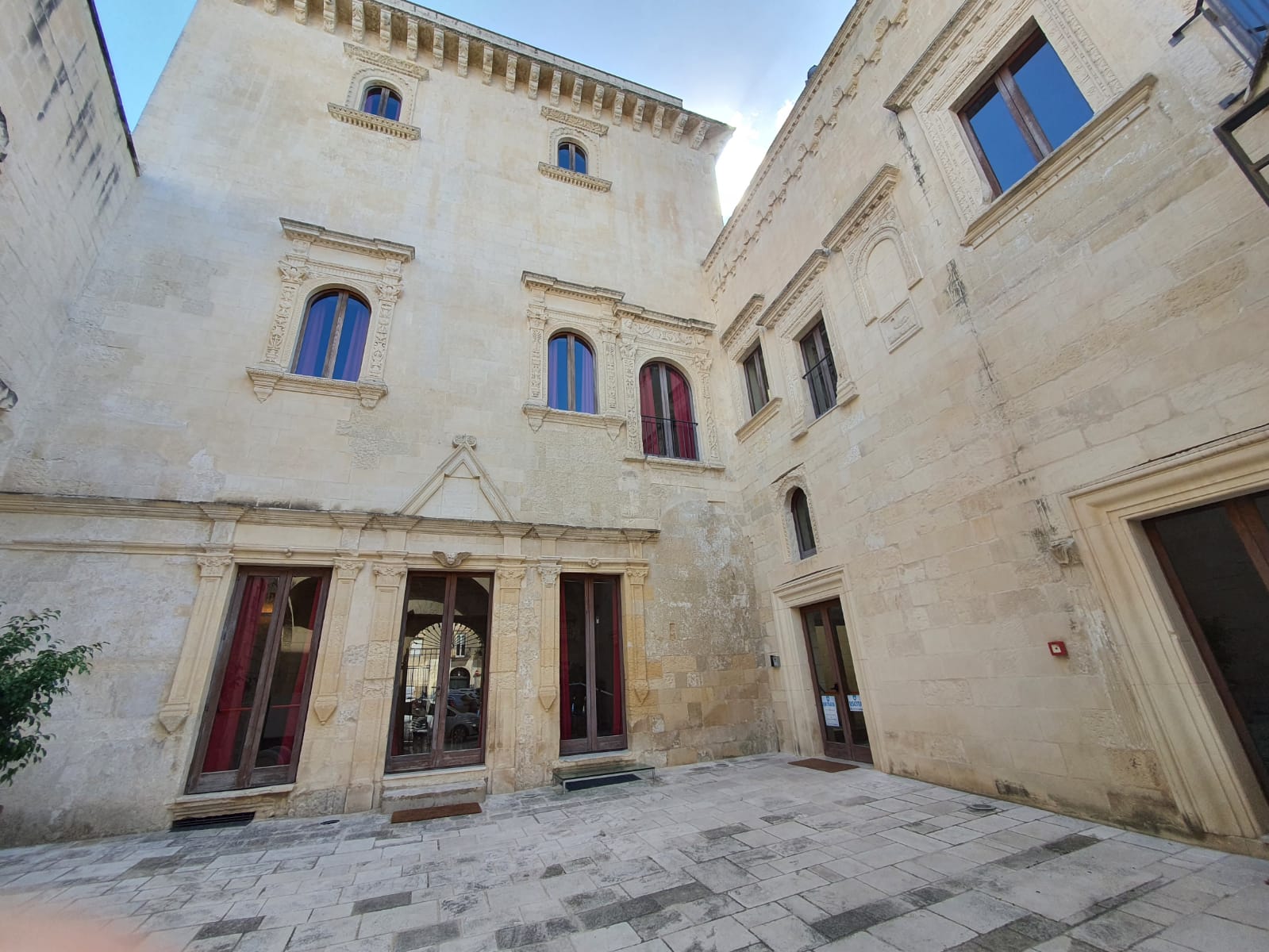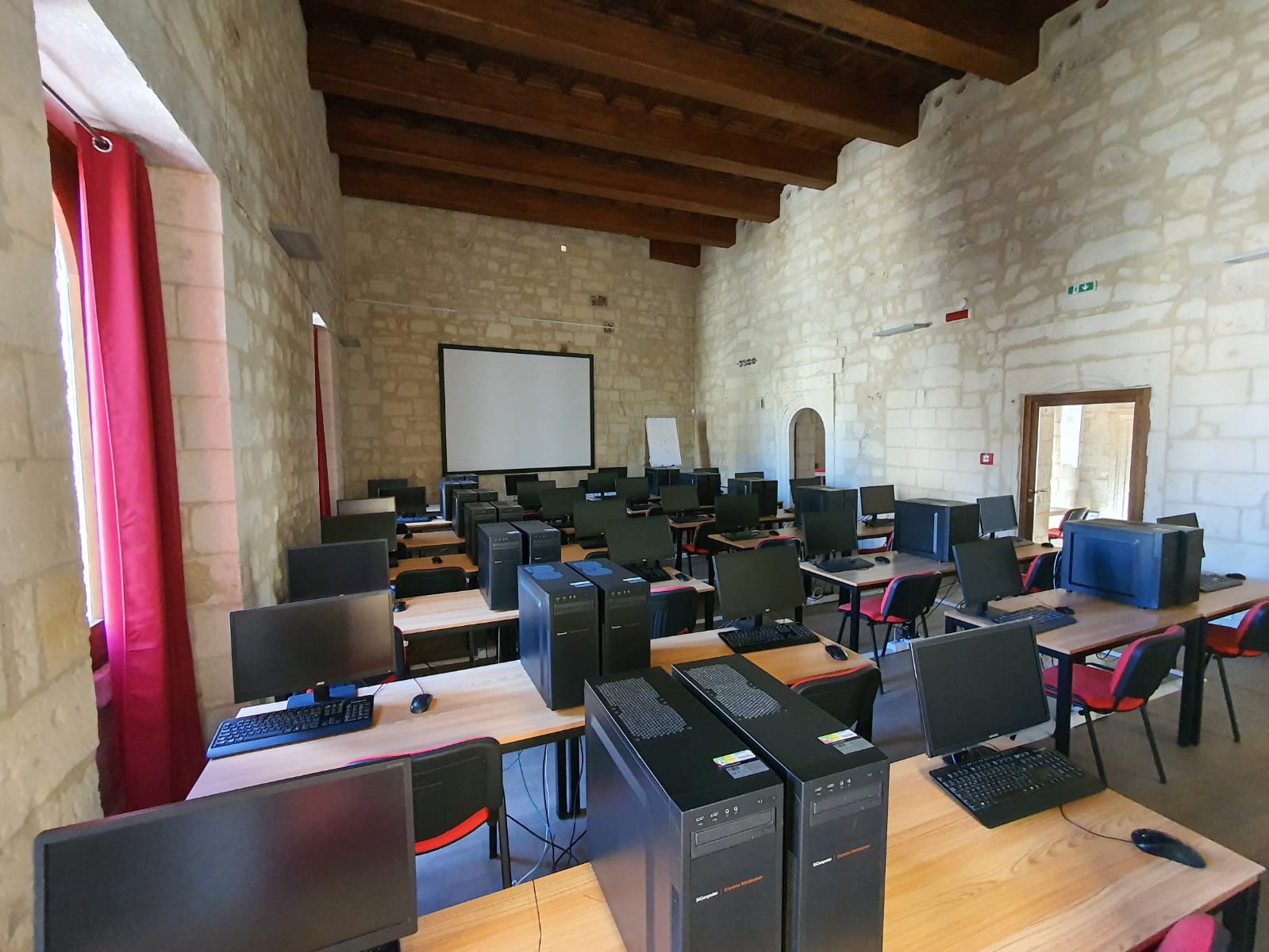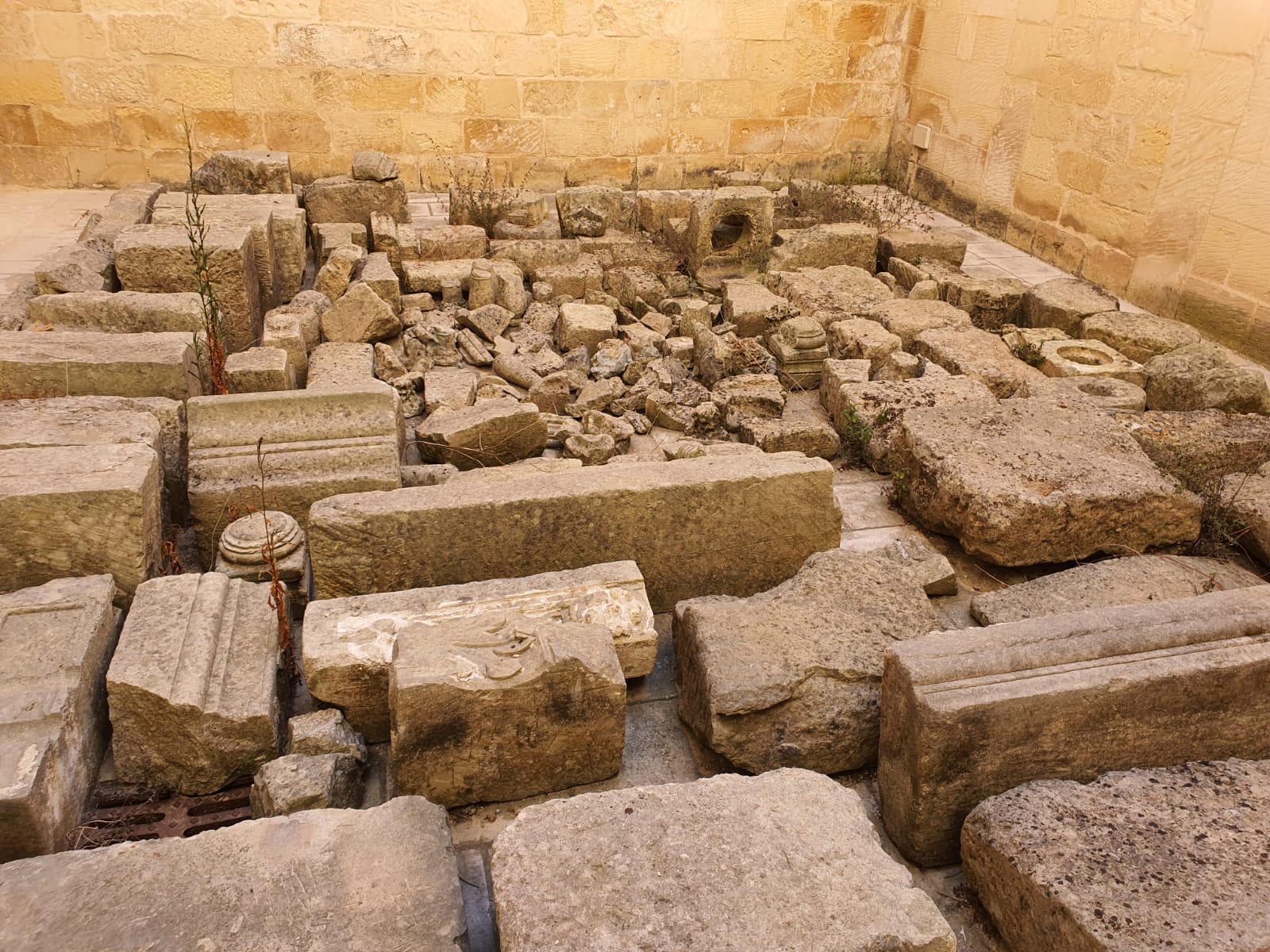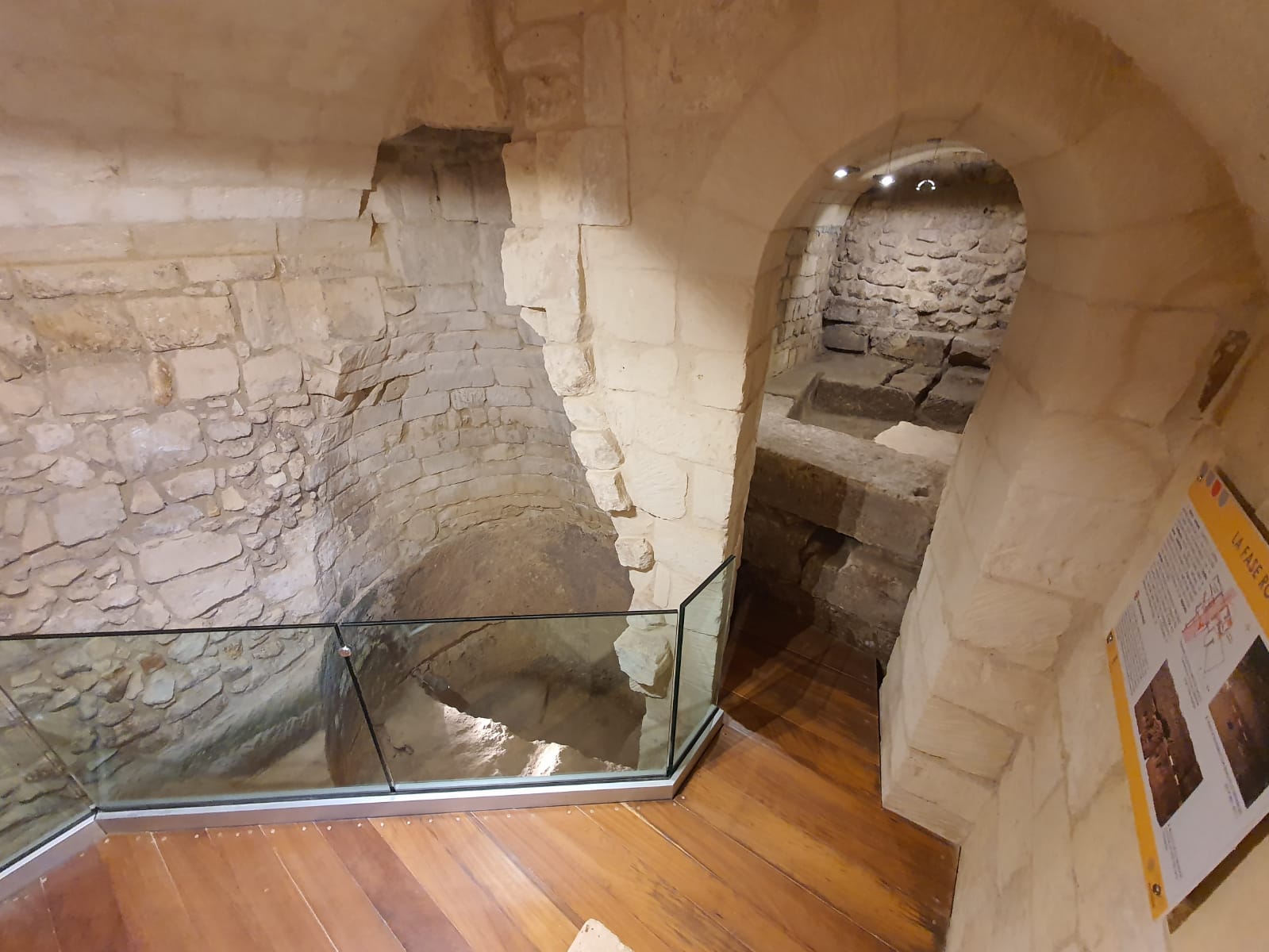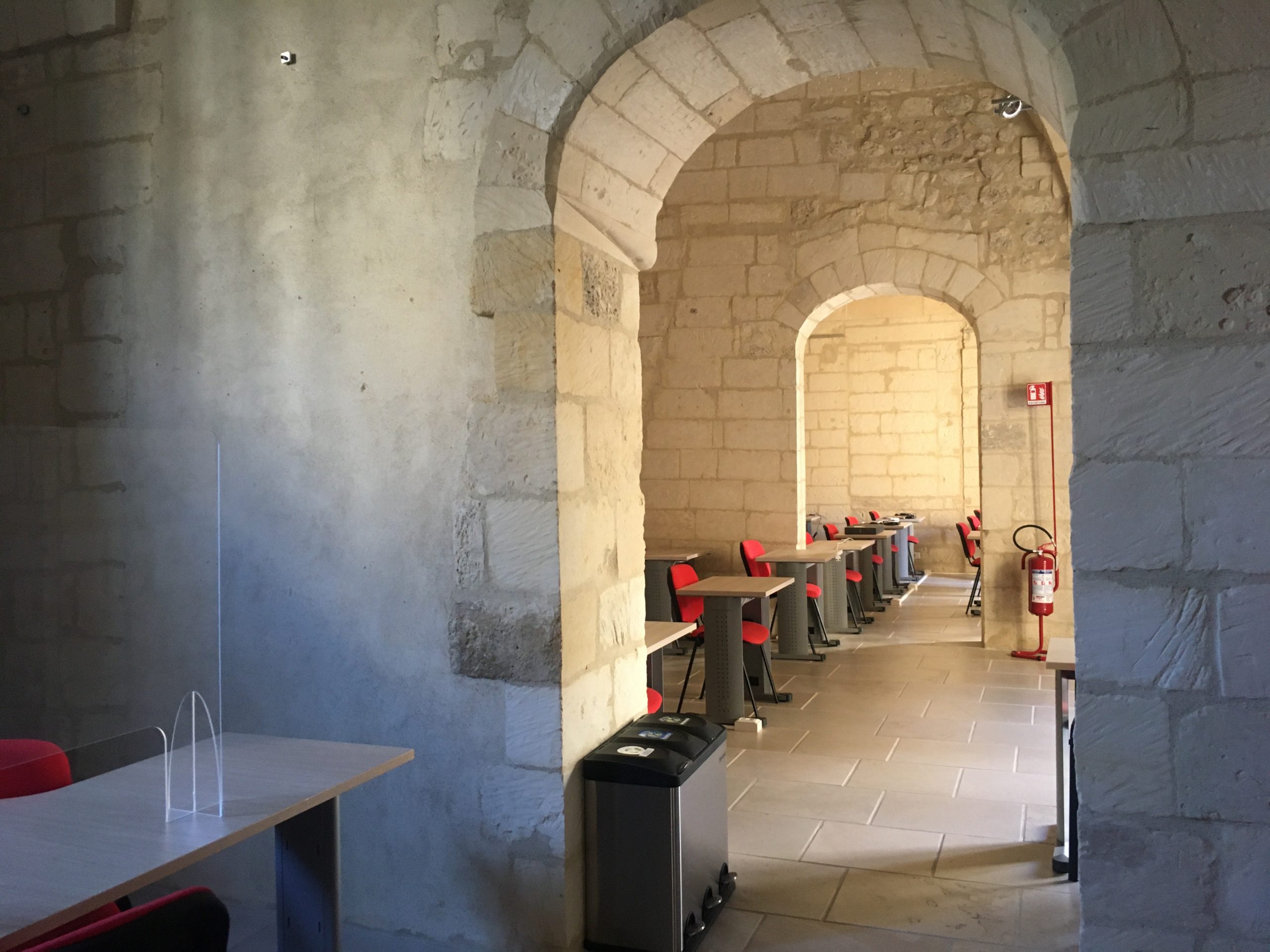In the centre of Lecce, a multidimensional space in which history, art and innovation interact.
Palazzo Vernazza is a jewel of Lecce Renaissance architecture that preserves thousands of years of history within its foundations; evidence from the precious archaeological finds that tell of the occupation of the site since the Iron Age. Among the oldest noble palaces of the capital of Salento (its tower dates back to the end of the 15th century AD), the building is owned by the Fondazione Casa Bianca, a non-profit committed to the social and cultural development of the area. Since 2011, the Foundation has opened its doors to revitalise the link between Palazzo Vernazza and the city of Lecce, showcasing it – at the end of a long restoration project – not only as a monument of cultural heritage to be protected and preserved, but also as a dedicated centre of innovation to the development of cross-media projects in the context of Culture 4.0. In fact, today the building is a multifunctional creative space that also houses the ITS Apulia Digital Maker – offering professional training in the ICT sector – in addition to Mediafarm.it with its entrepreneurial activities, which unite for a single mission: to innovatively enhance the promotion of historical and cultural heritage.


